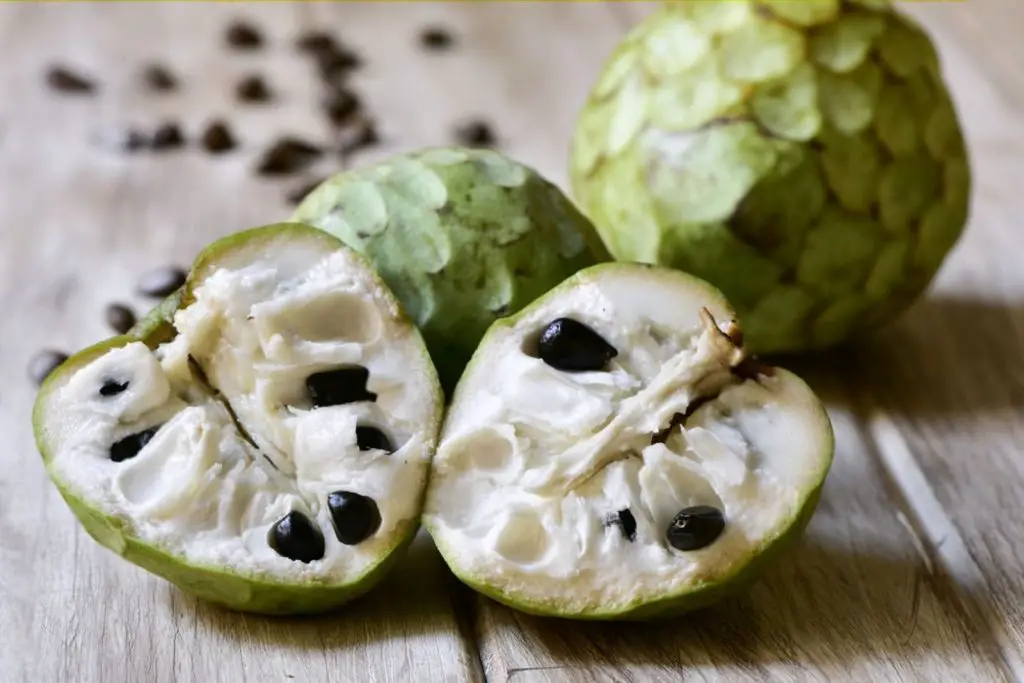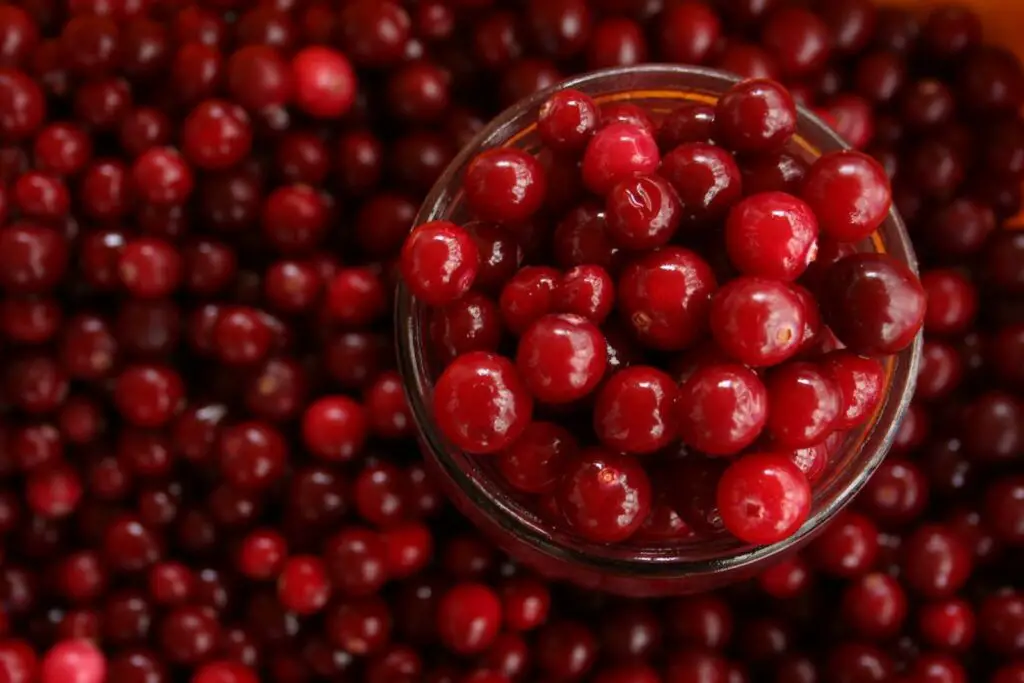
Enter the vibrant realm of pomegranates, the jewel-like fruit known for its luscious ruby-red arils and refreshing sweetness. Bursting with antioxidants and a unique blend of flavors, pomegranates have captivated taste buds for centuries. From enjoying the seeds as a snack to incorporating them into salads, desserts, and juices, pomegranates offer a versatile culinary experience. However, if you find yourself with an abundance of this delightful fruit or wish to prolong its availability beyond its seasonal peak, freezing pomegranates is a simple and effective method to preserve their juicy goodness. In this guide, we’ll delve into the art of freezing pomegranates, ensuring that you can savor their delightful taste all year round.
Here are the simple steps to freeze pomegranate:
Step 1: Select the Perfect Pomegranates
When it comes to freezing pomegranates, the first step is selecting the right fruit. Choosing ripe and fresh pomegranates is essential to ensure the best quality and taste after freezing. Here’s why it’s important and what to look for:
- Firmness: Opt for pomegranates that are firm to the touch. A ripe pomegranate should feel solid and not give in easily when gently squeezed. Avoid pomegranates that feel soft or mushy, as they may be overripe or have started to spoil.
- Weight: A heavy pomegranate is an indicator of juiciness and freshness. When comparing pomegranates of similar size, choose the one that feels heavier, as it is likely to contain more juice-filled arils.
- Color: Look for pomegranates with a deep red color. The skin should be vibrant and evenly colored, indicating that the fruit has ripened fully. Avoid pomegranates with pale or greenish hues, as they may not have developed their full flavor.
- Blemishes and Cracks: Examine the surface of the pomegranates for any blemishes, cuts, or cracks. Pomegranates with smooth, unblemished skins are less likely to have been damaged or exposed to bacteria, ensuring better quality after freezing.
- Soft Spots: Steer clear of pomegranates with soft spots or areas of decay. These indicate that the fruit has begun to spoil and may not freeze well. Fresh, healthy pomegranates are free from any mushy or discolored patches.
By selecting pomegranates that meet these criteria, you increase the chances of freezing them successfully and preserving their flavor, texture, and nutritional value. Remember, the quality of the pomegranates before freezing directly affects the quality of the frozen fruit.
Step 2: Prepare the Pomegranates
Properly preparing the pomegranates before freezing is crucial to maintain their quality and ensure hygienic storage. Here’s a detailed explanation of how to prepare the pomegranates:
- Washing: Start by thoroughly washing the pomegranates under cool running water. This step is essential to remove any dirt, dust, or surface contaminants that may be present on the fruit. Gently rub the pomegranates with your hands to ensure thorough cleaning.
- Drying: After washing, pat the pomegranates dry with a clean towel. Removing excess moisture helps prevent the formation of ice crystals during freezing, which can affect the texture and quality of the pomegranates.
- Removing the Crown: The crown refers to the top portion of the pomegranate, where the stem is located. Using a sharp knife, carefully cut off the crown, making sure not to cut into the seeds. It’s essential to remove the crown before freezing as it can impede the extraction of arils and take up unnecessary space in storage containers.
By washing the pomegranates, you eliminate any dirt or impurities that may compromise the quality of the frozen fruit. Additionally, drying them and removing the crown ensures that you have clean, intact pomegranate.
Is it necessary to blanch pomegranate seeds before freezing?
Blanching pomegranate seeds before freezing is not necessary. However, some people prefer to blanch them for a brief period to preserve the color and texture. Blanching involves briefly immersing the seeds in boiling water, followed by an immediate transfer to ice water to stop the cooking process.
Step 3: Extract the Arils
Extracting the arils from the pomegranate is a crucial step in freezing them. Here’s a detailed explanation of how to extract the arils effectively:
- Score the Pomegranate: Using a sharp knife, carefully score the pomegranate’s skin into quarters. Make shallow cuts along the ridges of the pomegranate, ensuring not to cut too deep into the arils. This scoring process will help you separate the fruit easily in the next step.
- Pull Apart the Quarters: Gently pull the scored quarters of the pomegranate apart. The natural division lines of the fruit should allow them to separate easily. If necessary, you can use your fingers to further loosen the quarters and create space for aril removal.
- Loosen the Arils: With the quarters separated, use your fingers to loosen the arils from the white pith or membrane. Be gentle to avoid damaging the arils or releasing excess juice. By carefully separating the arils, you ensure that only the desirable fruit portion is frozen.
- Submerge in Water: Prepare a large bowl of water nearby and submerge each pomegranate quarter into the water. While submerged, continue separating the arils from the pith by gently loosening them with your fingers. As you do this, the arils will sink to the bottom of the bowl, while the pith will float to the surface.
- Remove the Pith: Once the arils have sunk to the bottom and the pith has floated to the surface, carefully skim off the pith with a slotted spoon or your fingers. Collect the pith and discard it. This step ensures that only the arils, which are the desirable part of the fruit, are retained for freezing.
- Collect the Arils: Using a slotted spoon or your fingers, carefully collect the separated arils from the bowl. Transfer them to a separate bowl or container that will be used for freezing. Take care not to include any remaining pith or excess water with the arils.
By following this process you can successfully separate the pomegranate arils from the white pith and prepare them for freezing. This extraction process ensures that you have clean, intact arils ready for freezing and preserves the quality and taste of the pomegranates.
Step 4: Pre-Freeze
Pre-freezing the pomegranate arils before long-term storage is an important step to prevent them from clumping together. Here’s a detailed explanation of the pre-freezing process:
- Spread the Arils on a Baking Sheet: After extracting the pomegranate arils, prepare a baking sheet lined with parchment paper. Make sure the baking sheet is large enough to accommodate all the arils in a single layer without them touching each other. This ensures that they freeze individually and won’t stick together.
- Evenly Arrange the Arils: Spread the arils evenly on the parchment paper-lined baking sheet. Take care to distribute them in a way that minimizes contact between the individual arils. This helps prevent them from freezing together and forming large clumps.
- Place in the Freezer: Once the arils are spread out, place the baking sheet in the freezer. Make sure it sits flat and level to prevent the arils from sliding or shifting during freezing. Leave them in the freezer for about 2 to 3 hours or until they are firm to the touch.
- Check for Firmness: After the specified pre-freezing time, check the arils to ensure they are firm. Gently press one or two arils with your finger. They should feel solid and not easily squishable. If they are firm to the touch, they are ready for the next step of packaging for long-term freezing.
Pre-freezing is important because it helps maintain the individual integrity of the arils during long-term storage. By freezing them individually before packaging, you prevent them from clumping together, making it easier to measure out portions and use them as needed in the future. Pre-freezing also helps preserve the texture and quality of the arils, ensuring they retain their juiciness and freshness.
Step 5: Pack for Long-Term Freezing
Proper packaging is essential to maintain the quality and prevent freezer burn when freezing pomegranate arils. Here’s a detailed explanation of how to package them for long-term freezing:
- Choose Freezer-Safe Containers or Bags: Select airtight freezer-safe containers or resealable freezer bags to store the pre-frozen pomegranate arils. Ensure that the containers or bags are designed for freezing and can withstand low temperatures without becoming brittle or cracking.
- Transfer the Arils: Carefully transfer the pre-frozen pomegranate arils from the baking sheet into the chosen containers or bags. Fill them up, leaving some headspace to allow for expansion during freezing. It is best to pack them in small portions to make it easier to thaw only the amount needed later.
- Remove Excess Air: Before sealing the containers or bags, remove as much air as possible. Air can cause freezer burn and degrade the quality of the arils over time. For bags, gently press out the excess air while sealing. For containers, press a layer of plastic wrap directly onto the surface of the arils before closing the lid to minimize air contact.
- Label the Containers or Bags: It is important to label the containers or bags with the date of freezing and the contents. This information helps you keep track of the storage time and easily identify the pomegranate arils later. Use a waterproof marker or labels to ensure the information remains intact during freezing.
- Store in the Freezer: Place the sealed and labeled containers or bags in the freezer. Ensure they are stored upright to prevent any leakage or damage to the arils. Keep them in an organized manner, arranging them in a way that allows easy access and prevents them from being crushed or shifted by other items.
Proper packaging and labeling help maintain the quality, prevent freezer burn, and allow you to easily identify and retrieve the pomegranate arils when needed. By following these steps, you can ensure that the arils remain fresh, flavorful, and in optimal condition for an extended period in the freezer.
Step 6: Freeze and Store in the Freezer
After properly packaging the pomegranate arils, it’s time to freeze and store them. Here’s a detailed explanation on how freezing and storage process:
- Freezing: Place the sealed containers or bags of pomegranate arils in the freezer. Ensure that they are stored upright to prevent the arils from sticking together. This upright position allows for even freezing and easier retrieval of individual portions when needed.
- Storage Duration: Pomegranate arils can be stored in the freezer for up to 6 months without a significant loss in quality. During this time, they will retain their flavor, texture, and nutritional value. However, for longer storage, it’s advisable to consider additional measures to maintain freshness.
- Vacuum-Sealing: If you plan to store the pomegranate arils for an extended period beyond 6 months, consider vacuum-sealing the containers. Vacuum sealing removes excess air, minimizing the risk of freezer burn and preserving the quality for a longer time. Follow the instructions of your vacuum sealer for proper sealing.
- Airtight Freezer Bags: Another option for longer storage is to transfer the pre-frozen arils into airtight freezer bags. Squeeze out as much air as possible before sealing the bags. Airtight bags provide an extra layer of protection against freezer burn and help maintain the quality of the arils.
- Label and Date: Before placing the containers or bags in the freezer, make sure to label them with the contents and date of freezing. This information is crucial for easy identification and rotation of the arils. It helps you keep track of the storage time and use the oldest batches first.
By going through those stages, you can freeze and store pomegranate arils effectively. Whether you plan to store them for up to 6 months or longer, proper freezing and storage techniques help maintain their freshness, flavor, and nutritional value for future use.
Step 7: Thaw the Frozen Pomegranate
Once you’re ready to enjoy the frozen pomegranate arils, it’s important to thaw them properly to preserve their flavor and texture. Here’s a detailed explanation of how to thaw and use frozen pomegranate arils:
- Transfer from Freezer to Refrigerator: Take the desired amount of frozen pomegranate arils from the freezer. Transfer them to a container or bowl and place them in the refrigerator. Thawing in the refrigerator allows for a slow and controlled thawing process, which helps maintain the juiciness and texture of the arils.
- Thawing Time: Allow the pomegranate arils to thaw slowly overnight or for a few hours in the refrigerator. The exact thawing time may vary depending on the quantity of arils and the temperature of your refrigerator. Thawing overnight ensures that the arils fully regain their juiciness and texture.
- Check for Thawing: After the thawing time, check the arils to ensure they have fully thawed. Gently press one or two arils with your finger to confirm they are soft, juicy, and no longer frozen. If they still feel firm or icy, allow them more time to thaw in the refrigerator.
By properly thawing the frozen pomegranate arils and using them in different culinary creations, adding a delicious and nutritious touch to your meals.
Other related questions
Can you refreeze the pomegranate?
No, it is not recommended to refreeze pomegranate arils once they have been thawed. Refreezing can lead to a loss of quality, texture, and taste, as it can cause the arils to become mushy and lose their juiciness. It is best to consume the thawed pomegranate arils or use them in recipes immediately after thawing to enjoy their optimal flavor and texture.
How do I know if the pomegranate has gone bad after being frozen?
After being frozen, you can determine if a pomegranate has gone bad by examining its appearance, smell, and texture. Look for signs of freezer burn, such as discoloration or drying out of the arils. If the pomegranate emits a sour or unpleasant odor, it may indicate spoilage. Additionally, if the arils have become mushy or excessively soft, it is likely that the pomegranate has deteriorated and should not be consumed.
Can I use frozen pomegranate arils in cooking or baking?
Yes, frozen pomegranate arils can be used in cooking or baking. They can be added to various recipes, such as salads, smoothies, desserts, or sauces, to provide a burst of flavor and visual appeal. However, it’s important to keep in mind that the texture of the arils may change slightly after freezing, so they might be softer compared to fresh ones.
Can I use frozen pomegranate for souffles?
Using frozen pomegranate for soufflés can be a viable option, as the frozen arils can add a burst of flavor and visual appeal to the dish. However, it’s important to consider that the excess moisture from the thawed arils might affect the texture of the soufflé, potentially making it slightly denser. To minimize any potential moisture issues, it is recommended to drain the thawed arils before incorporating them into the soufflé mixture.








